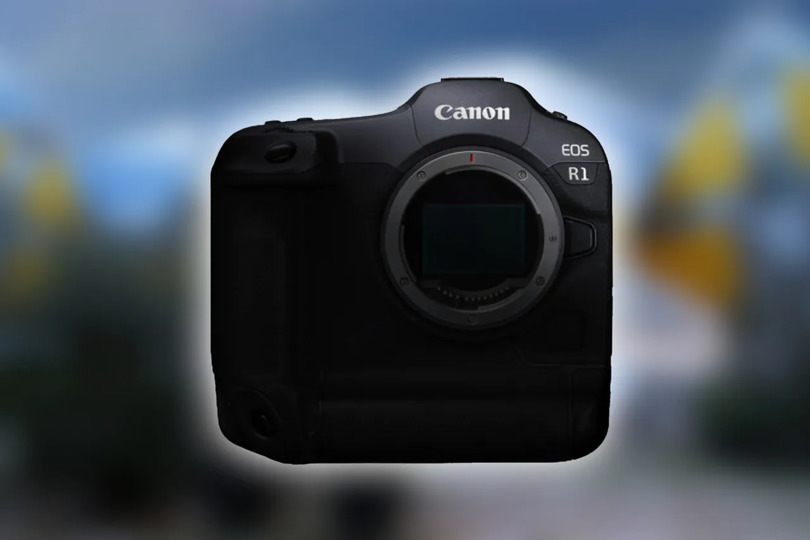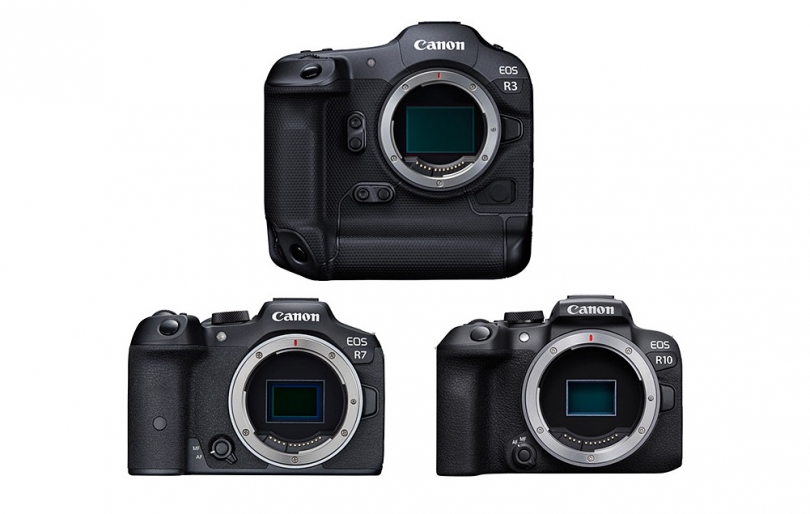
Canon EOS 5D IV: What you need to know It's been more than four years since the launch of the Canon EOS 5D Mark III, and just head of this year's Photokina trade show in Cologne we finally have a successor: the EOS 5D Mark IV.
While externally similar to the 5D III, and the higher-resolution 5DS/5DS R, the new EOS 5D Mark IV offers some significant internal improvements. We got our hands on a pre-production camera recently, and in this slideshow we'll be giving you a quick overview of the key features.
The EOS 5D Mark IV will come in three kits: body only ($3499), with the 24-70 IS USM lens ($4399) or with the 24-105 IS II USM lens ($4599).
Canon EOS 5D IV: What you need to know
The Canon EOS 5D Mark IV offers a roughly 30% increase in pixel count over its predecessor, and sits midway in terms of resolution between the EOS 5D III and the EOS 5DS/R, currently 'best in class' at 50MP. Nikon’s current 'resolution' flagship, the 36MP D810, offers a few more pixels but practically speaking the difference between 30MP and 36MP is likely to be pretty much academic.
The 5D Mark IV’s native ISO sensitivity span extends a touch higher than that of the EOS 5D III, covering ISO 100-32000. Its extended ISO sensitivity span, however, is identical to that of its predecessor, at 50-102400. Both cameras offer greater nominal low light sensitivity than the Nikon D810, which is capped at ISO 12800 natively, and can be extended to 51200.
Canon EOS 5D IV: What you need to know
New (and currently exclusive) to the EOS 5D IV is what Canon is calling ‘Dual Pixel Raw’. This mode uses the sensor’s Dual Pixel photo sites (more on that below) to effectively create two 30MP files from a single exposure. The resulting file can be adjusted in Canon’s Digital Photo Professional Software to slightly shift the point of critical focus.
The technology behind this feature is complex – it isn’t light field imagery, although the user experience is similar – and we’ll be digging into it more when we receive a fully reviewable camera.
Canon EOS 5D IV: What you need to know
Something old, something new, something borrowed… the EOS 5D Mark IV’s AF system is very closely related to that of the EOS 5D III, which itself inherited the 61-point AF array from the (then) flagship EOS-1D X. New in the EOS 5D IV is the addition of Canon’s iTR (Intelligent Tracking and Recognition) system which incorporates data from a 150,000-pixel metering sensor, to assist subject recognition.
In theory this should make the 5D IV better at identifying and maintaining focus on moving subjects, but from our (admittedly limited) use so far it seems to offer roughly the same performance as the EOS 5DS/R. Which is to say: not bad, but not great. The EOS 5D IV might prove somewhat more useful for fast action photographers than its predecessor, but when it comes to tracking, the Nikon D810 probably still offers the most capable autofocus system in this class. Obviously though, this is something we'll be testing as soon as possible.
Canon EOS 5D IV: What you need to know
One key area where the EOS 5D IV outshines the D810 is autofocus in live view and video. The Mark IV’s Dual Pixel AF system brings rapid and consistently reliable focus in both modes, and unlike the flagship EOS-1D X II, the 5D IV can offer continuous tracking in live view mode, in addition to the incredible capable movie servo AF during video recording. Based on the time we've spent with preproduction Mark IV's, we are very impressed with just how responsive the Dual Pixel system is.
By comparison, the EOS 5D III’s contrast-detection live view and video AF system is slow, prone to hunting, and cannot offer any kind of continuous focusing. The same applies to the D810, which offers a similarly basic contrast-detection autofocus system in these modes.
Canon EOS 5D IV: What you need to know
As far as handling is concerned, the EOS 5D IV offers a broadly similar experience to its predecessor. This is simple common sense on Canon’s part, but the new camera isn’t just a re-heated version of the same old 5D-series ergonomics. For one thing, the 5D IV features a touch-sensitive, 3. 2" rear screen which, unlike the EOS-1D X II, is tightly incorporated into all key areas of the camera’s feature set.
From touching to focus in live view and video to quickly tapping to zoom into images after a shoot, the EOS 5D IV’s touchscreen makes a real - and very positive - difference to the camera’s handling compared to both the EOS 5D III and also competitive cameras like the Nikon D810 and Sony a7R II.
Canon EOS 5D IV: What you need to know
In classic Canon style, for all of the brand new features that the EOS 5D IV brings to the table, it inherits a few, too. One of the more welcome additions is an EOS 7D II-style AF area selection button, just below and to the right of to the AF joystick on the rear of the camera. As with the 7D II, this button can be customized to fulfill one of various other functions, depending on the preferences of the photographer.
Canon EOS 5D IV: What you need to know
Hiding inside that comfy grip are dual slots for SD and CompactFlash media. As usual, media can be configured so that when two cards are installed, one acts as overflow storage, backup storage, or can be dedicated to either stills or video.
That molding line on the EOS 5D Mark II's pentaprism might look like the camera boasts a built-in flash, but it doesn't. The very top of the pentaprism is polycarbonate, to accommodate the requirements of built-in WiFi and GPS. The EOS 5D IV is fully weather-sealed, and when paired with one of Canon's L-series lenses, it should withstand shooting in tough conditions.
Canon EOS 5D IV: What you need to know
There are plenty of holes in the EOS 5D IV, but fortunately they're physical, not figurative. As well as microphone and headphone monitoring sockets you'll also find HDMI out, USB 3. 0 and a conventional flash sync socket. Just under our hand model's thumb is the port for a wired remote shutter release.
Speaking of video, the EOS 5D Mark IV becomes only Canon’s third DSLR to offer 4K video capture, in addition to a solid HD video feature set. As we’ve come to expect from 4K-capable DSLRs there is a crop factor at play in 4K video mode, though, and it's fairly aggressive at around 1. 7X - somewhat more aggressive than Super 35mm format.
Canon EOS 5D IV: What you need to know
Neither the EOS 5D III nor Nikon D810 offer 4K, of course, and the EOS 5D IV’s combination of high-resolution video, full-time touchscreen interface and Dual Pixel AF make it - at least on paper - the most capable full-frame DSLR for video at this point in time.
Clean HDMI out is possible, not for 4K. Like the EOS-1D X Mark II, 4K recording is only possible in the highly inefficient Motion JPEG format, but according to Canon, this is deliberate, as it offers easy stills extraction from a 4K timeline - essentially enabling 30 fps 8MP capture (assuming favorable shooting conditions).
The Canon EOS 5D Mark II uses the very familiar LP-E6N battery, rated at 900 shots per charge (CIPA).
Canon EOS 5D IV: What you need to know
A new dedicated grip, known as the BG-E20 ($349), doubles your battery life and offers additional controls for shooting in the portrait orientation.
Canon EOS 5D IV: What you need to know
The EOS 5D IV is launched alongside a brand new 24-105mm F4 IS L II USM kit zoom, and a Mark III version of the 16-35mm F2. 8 (pictured above). These lenses retail for $1099 and $2199 respectively, and both are scheduled for October availability.
Canon EOS 5D IV: What you need to know
Compared to its predecessor, the EOS 5D IV is improved in virtually every way. Compared to the EOS 5DS/R, while the Mark IV can’t quite match their resolving power, it outpaces them in terms of speed, and of course a much richer video feature set.
Nikon’s D810 is the EOS 5D Mark IV’s most obvious competitor, but although it’s been on the market for quite some time, it’s still very competitive in several areas. Where the EOS 5D IV scores over the D810 is video specification (obviously) and some aspects of handling. Thanks to Dual Pixel AF, the EOS 5D IV much more fun to use in video and live view modes, but the addition of a touchscreen makes some operations – like image review – quicker and easier than they are with the D810’s more traditional button-based ergonomics.
Let us know what you think of Canon’s new EOS 5D Mark IV in the comments.
. dpreview.com2016-8-28 15:00











